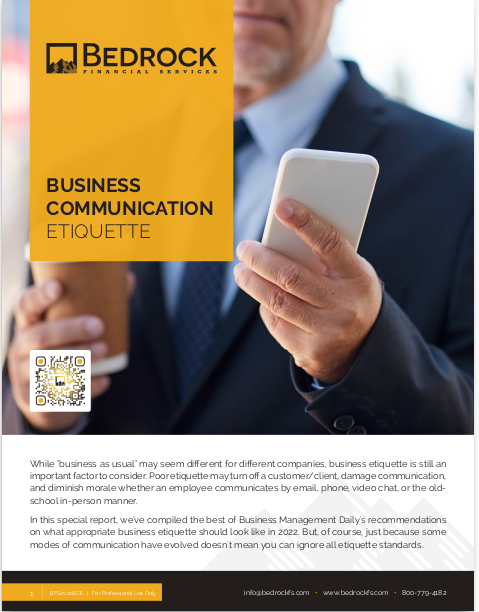Key Takeaways
-
Seasonal patterns in clients’ lives—not the calendar—should shape your insurance outreach.
-
Planning communications around life events, enrollment periods, and behavioral cues makes your timing feel personalized and purposeful.
Timing Isn’t Everything—But It’s a Lot
Many financial professionals stick to calendar-based outreach: January means resolutions, summer means vacations, and Q4 means scrambling before deadlines. But seasonal insurance planning in 2025 isn’t about sticking to holidays or quarterly pushes—it’s about understanding when clients are mentally and emotionally ready to engage.
You aren’t just managing a sales calendar. You’re managing life readiness.
Why Traditional Calendar Marketing Falls Short
Relying solely on holidays, tax deadlines, or annual events can lead to generic messaging. Yes, January brings a desire for change. And yes, November brings Open Enrollment. But those patterns are surface-level.
Here’s what traditional calendar-based marketing misses:
-
Client fatigue: Generic outreach blends in with everyone else’s.
-
Misaligned timing: You might hit clients when their bandwidth is low or when they’re already overwhelmed by other life decisions.
-
One-size-fits-none: Not all clients have the same seasonal cycles. Teachers, contractors, new parents—all have different windows of mental availability.
Understanding Behavioral Seasons
Your outreach should be built around behavioral seasons, not just calendar dates. Behavioral seasons are defined by:
-
Life events: Retirement, birth of a child, buying a home, or job transitions.
-
Annual financial rhythms: Tax filing, annual raises, TSP contribution resets.
-
Decision fatigue and clarity windows: When clients feel emotionally ready to take action.
Once you map these behavioral rhythms to your client base, your insurance planning becomes sharper and more actionable.
4 Strategic Seasons That Actually Matter in 2025
1. Pre-Tax Season (January to March)
Clients are already gathering documents, revisiting withholdings, and thinking about income. This window isn’t just for CPAs—insurance professionals can lean in here too.
Focus your outreach on:
-
Life insurance needs reviews based on adjusted incomes.
-
Tax-advantaged product reminders like HSAs and annuities.
-
Beneficiary updates and policy adjustments before filing season closes.
2. Mid-Year Clarity (May to July)
Once spring busyness passes, many clients enter a lull. Fewer financial deadlines. Less noise. It’s the perfect time to open quieter, deeper conversations.
This period works well for:
-
Long-term care planning
-
Reviewing disability and income protection policies
-
Retirement income scenario modeling
3. Back-to-Benefits Season (September to November)
This is the most obvious season—but what matters is how early and how well you position yourself before the flood of emails and HR reminders hit.
Clients need:
-
Clear guidance on enrollment options (without plan comparisons)
-
Coordination strategies between Medicare and employer coverage
-
Strategic discussions—not just selections—before deadlines arrive
The key is not to wait for October 15 or November. Start guiding your clients in early September.
4. Resolution Season (December to January)
This is when clients naturally reflect, reset, and recommit. It’s also when many of them feel unsure about what to do with leftover FSA funds, or how to adjust their budget for new premiums.
Use this moment to:
-
Encourage annual policy reviews
-
Clarify the impact of benefit changes from Open Enrollment
-
Introduce new planning tools or services for the upcoming year
What to Watch: Deadlines and Triggers
Beyond behavioral seasons, keep your eye on these real-world dates that shape client decision-making:
-
Medicare Open Enrollment: October 15 to December 7
-
Marketplace Open Enrollment: Typically November 1 to mid-January
-
TSP contribution deadlines: December 31 for elective deferrals
-
FSA use-it-or-lose-it deadlines: Usually December 31 unless carryover or grace periods apply
-
IRA contribution deadlines: April 15, 2025 (for 2024 tax year)
Build messaging around these—but always in the context of personal life events.
You Can’t Outsource Timing—But You Can Automate It
The good news is, with the right CRM or automation setup, you don’t need to manually track every client’s seasons. You can build workflows based on:
-
Birth dates and retirement ages (think Medicare or RMDs)
-
Policy anniversaries
-
Benefit renewal cycles
-
Major life changes noted during reviews
This makes it easier to send the right message at the right time—without relying on mass holiday blasts.
Messaging That Matches the Moment
Timing is only part of it. Once you get the when right, you have to get the what right too.
A client in May isn’t thinking the same way they are in October. Your messaging should reflect that. Here’s how:
In Q1: Lean into urgency and data
-
“Make sure your coverage matches your tax bracket.”
-
“Are you prepared for what happens if your refund disappears into emergency expenses?”
In Mid-Year: Lean into reflection and long-term thinking
-
“If your income stopped tomorrow, how long could you sustain it?”
-
“You’ve built a nest egg—now let’s talk about protecting it.”
In Q3: Lean into proactive education
-
“Let’s simplify your options before the deadlines arrive.”
-
“The best time to prepare isn’t October—it’s now.”
In Q4: Lean into resolution and readiness
-
“Before the new year starts, let’s make sure your family’s protected.”
-
“One review now can prevent five headaches later.”
Micro-Moments That Matter More Than Holidays
Don’t wait for Christmas or Independence Day to drive outreach. Instead, find micro-moments where clients are more open:
-
After their kids graduate
-
When they pay off a mortgage
-
After receiving a raise or bonus
-
Right after filing taxes
-
Before big vacations or moves
These are often when clients are most mentally available to consider insurance decisions. It’s not about the holiday—it’s about the headspace.
Segment, Score, and Stagger Your Outreach
To truly benefit from seasonal insurance planning, you need a system that helps you segment your audience and time your outreach accordingly:
-
Segment by life stage (early-career, mid-career, pre-retiree, retiree)
-
Score by engagement (how often they open, click, or respond)
-
Stagger messages over time, so no two clients receive the same message on the same day without cause
This keeps your communication feeling personal—even if it’s automated.
Why This Matters More in 2025
Client expectations have shifted. They don’t just want timely advice—they want it to feel custom-timed.
In 2025, attention is scarce, skepticism is high, and inboxes are overloaded. The professionals who win are the ones who:
-
Show up before the competition
-
Connect outreach to actual life patterns
-
Communicate like advisors, not advertisers
Your Clients Don’t Need a Holiday Reminder—They Need a Season-Savvy Advisor
The most successful financial professionals in 2025 aren’t reacting to the calendar—they’re shaping it. If you build your insurance communication strategy around client behavior, life rhythms, and decision-making windows—not just seasonal promotions—you’ll show up when it matters most.
At Bedrock Financial Services, we help advisors like you build smarter outreach strategies with tools that simplify timing, automate engagement, and keep your brand relevant all year long. Sign up today and let’s turn your calendar into a client-conversion engine.







